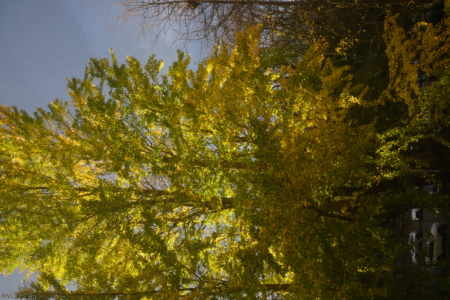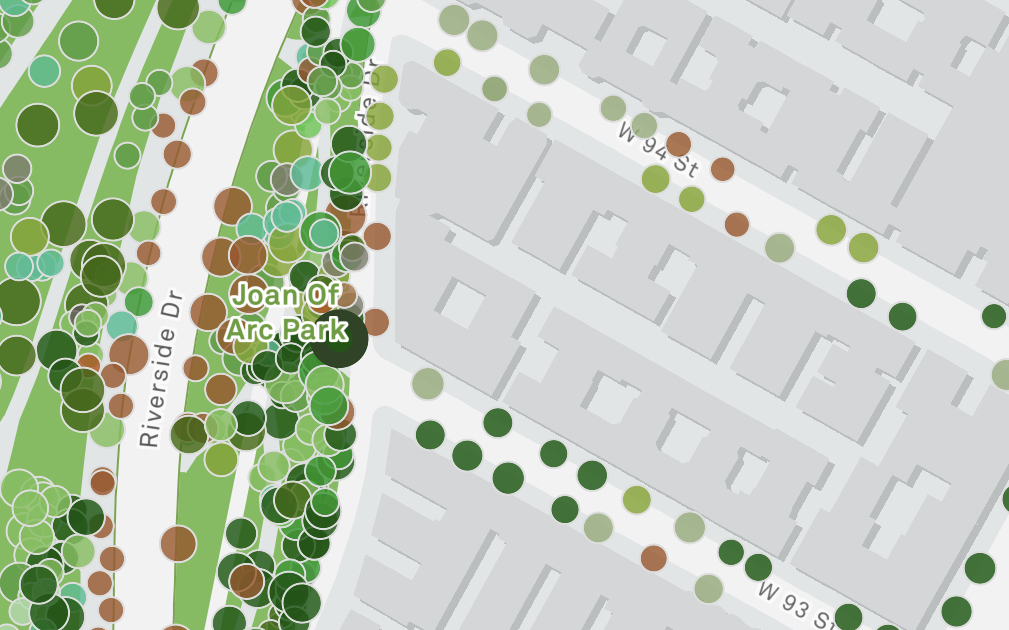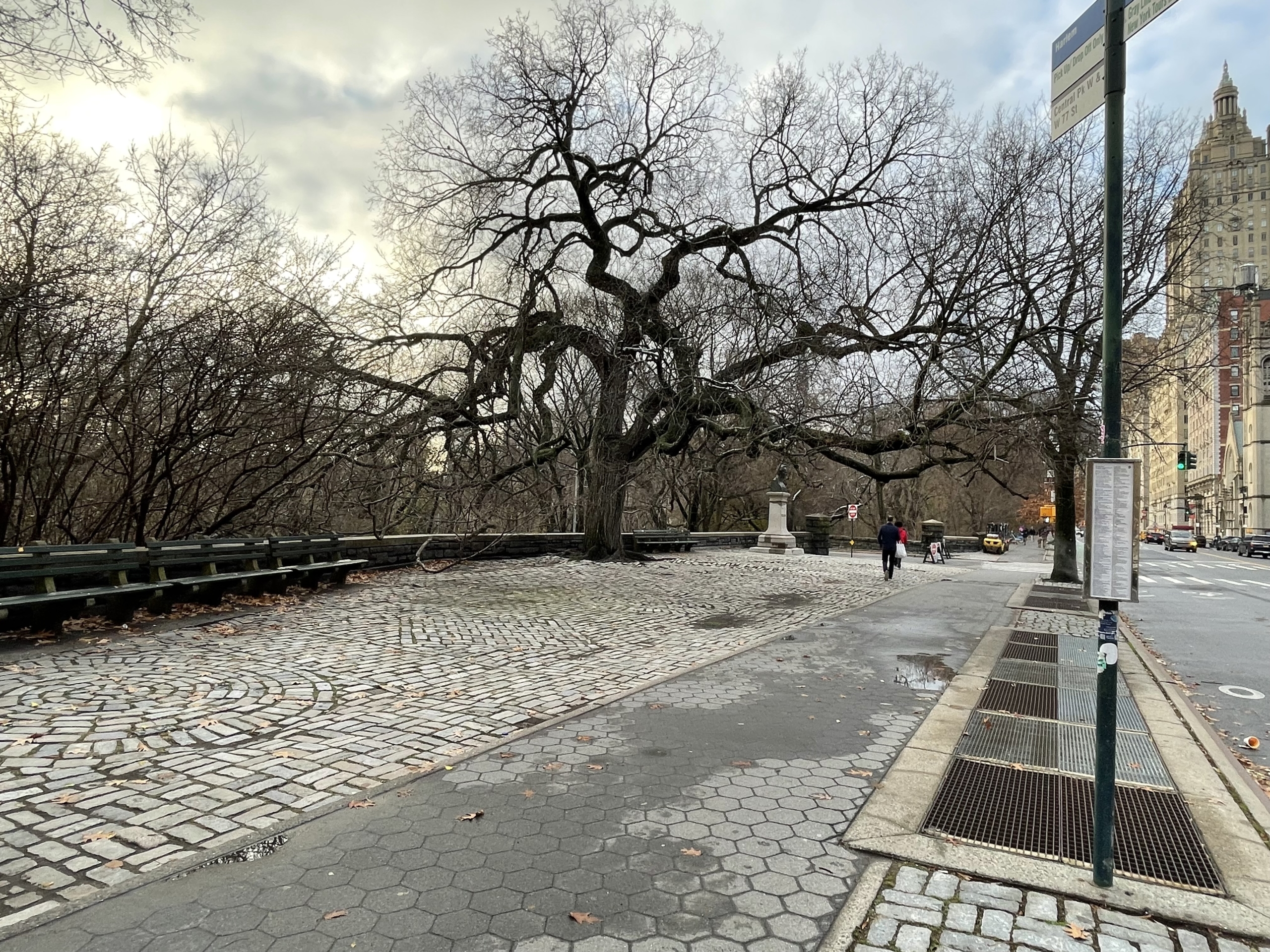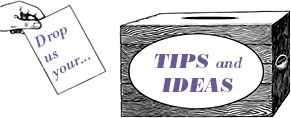
By Rachel Rose
On December 9th, the New York City Department of Parks & Recreation released what it hailed as “the most comprehensive and up-to-date ‘living tree map’ in the world.” Here is the link.
The map includes identification numbers, species information, ecological benefits of, and maintenance status for each of the 861,453 trees, representing 536 different species, managed by the Parks Department. All you have to do to find a tree is enter an address.
The trees included on the map comprise only a fraction of the millions in New York City, as they do not include trees in forest and wetland areas, or those under other jurisdictions. For example, Central Park is home to around 20,000 trees, but they are not yet included on the map (though they will be), because they are managed by the Central Park Conservancy.
What Trees Do For Us
The total annual ecological benefit derived from the mapped trees includes: preventing over 1.35 billion gallons of storm water from polluting streams, rivers, the ocean, and wetlands; removing over 1.5 million pounds of pollutants from the air; reducing greenhouse gas by storing over 1.5 billion tons of carbon dioxide (CO2); and conserving over 815 million kilowatt hours (kWh) of energy.
The Upper West Side is fortunate to be situated between two major parks and its cross streets are lined with many mature trees. Between 106th and 58th streets, from the Hudson River to Central Park West, the 11,342 trees logged on the map are estimated to annually capture 18.5 million gallons of storm water, remove 21.5 thousand pounds of air pollutants, reduce 19.4 million tons of carbon dioxide, and conserve over 11.3 million kWh of energy.
Other communities are not as fortunate. Extreme heat is the deadliest weather-related hazard in the United States. Increasing the tree canopy in the city is key to keeping communities cool. Parks has used the Interactive Heat Vulnerability Index, created by the New York City Department of Health and Mental Hygiene, to help steer tree-planting efforts towards communities with the highest risk of extreme heat, which, in Manhattan, are West Harlem, East Harlem, and the Lower East Side.
In 2007, former Mayor Michael Bloomberg and performer Bette Midler, founder of the New York Restoration Project, launched the MillionTreesNYC initiative to plant one million additional trees in public spaces in the city. In 2015, the millionth tree under that initiative was indeed planted. Now, NYC borough presidents are urging Mayor Eric Adams to oversee the planting of a million more trees by 2030. Adams has allocated $112 million and partnered with the nonprofit Natural Areas Conservancy to prioritize the growth of the urban forest, with an emphasis on providing relief to people living in extreme heat. In 2022, 13,000 new trees were planted, 3,000 of them in heat-vulnerable neighborhoods. A study from The Nature Conservancy found there is the potential to increase the city’s tree canopy cover from 22% to 42%, without changing existing landscape constraints, and even more if the city considers rezoning and new streetscaping.

Gingko Biloba, ID 4924016
The Parks Department has invited “New Yorkers to explore their favorite parks and seek out new ones to see what trees are growing where, report problems, and record tree stewardship.” This reporter has kept tabs on Gingko ID 4924016, located by Joan of Arc Park on Riverside Drive near 93rd Street, by creating an account on the map, “favoriting” the tree, and revisiting the favorites page.
 On the map, trees are represented by circles, tree species by circle color, and tree diameter by circle size. The listed yearly ecological benefits of my tree include 1,107 gallons of stormwater that is intercepted; 950 kWh of energy that is conserved; two pounds of air pollutants that are removed; and 824 tons of CO2 that are reduced. The Parks Department uses formulas from the United States Forest Service to calculate the annual monetary value of the benefits from this Gingko tree, and the total comes to $143.22.
On the map, trees are represented by circles, tree species by circle color, and tree diameter by circle size. The listed yearly ecological benefits of my tree include 1,107 gallons of stormwater that is intercepted; 950 kWh of energy that is conserved; two pounds of air pollutants that are removed; and 824 tons of CO2 that are reduced. The Parks Department uses formulas from the United States Forest Service to calculate the annual monetary value of the benefits from this Gingko tree, and the total comes to $143.22.
Your favorite tree may be on a side streets, like the London planetree on West 75th between Amsterdam and Columbus: Tree ID 1396652, trunk diameter 19 inches. It intercepts 2,663 gallons of storm water each year, removes 3 pounds of air pollutants, reduces 2,104 tons of carbon dioxide and conserves 1,670 kwh of energy. All while helping to beautify the neighborhood, and saving the city $258.91 annually.

Or you might find yourself sitting beside this magnificent American Elm at the northeast corner of 77th and Central Park West, while you wait for the uptown bus after visiting the American Museum of Natural History or the New-York Historical Society. This beauty, ID # 1423952, with its long limbs captures 8,638 gallons of storm water, 9 pounds of air pollutants, 18,636 tons of carbon dioxide, and conserves 2,920 kwh of energy each year.
What We Can Do For The Trees
West Siders can also focus on maintaining the trees through their everyday actions. Don’t let your dogs pee or kick up the dirt in tree beds! The salt and ammonium in dog urine destroy a tree’s defense system, and kicking hardens the soil around it, making it difficult for water and nutrients to reach its roots. Maintaining existing trees is important, because they have a much larger storage capacity for CO2 than younger or newly planted trees. You can join a tree-care group by clicking on the “Groups” tab of the map, or learn how to care for a tree by clicking on the “Learn” tab, or by volunteering as a tree steward. The map also provides links to their library for tree-care tips, stewardship groups in the area, and tree-planting or tree-care events. You can request that a tree be planted using iTree technology or this NYC Parks Approved Species List to guide the process.
Spend some time on the map. Have some fun! Pick some favorite trees to follow. Send us what you learn, along with pictures of your favorite trees.










this is lovely, thank you for posting this! I wonder how quickly it’s updated when there is a tree that’s going to be felled…
If a tree is felled and no one updates, does it still make a sound?
YAY!!! Wonderful !!
The elm is at the northeast corner of CPW & 77th Street
Thank you, corrected
There is a map of Central Park trees. It’s on an app called Central Park Entire. On the app, if you touch a tree, it will tell you what it is. It also names points of interest, bridges and monuments, restrooms and other places in Central Park. It is extremely useful.
Thank you!
Yaaaayyyyy! So happy to hear about this. Have been using the street tree map and feeling frustrated not to have one for the parks. Great news!
Very interesting story, thank you!